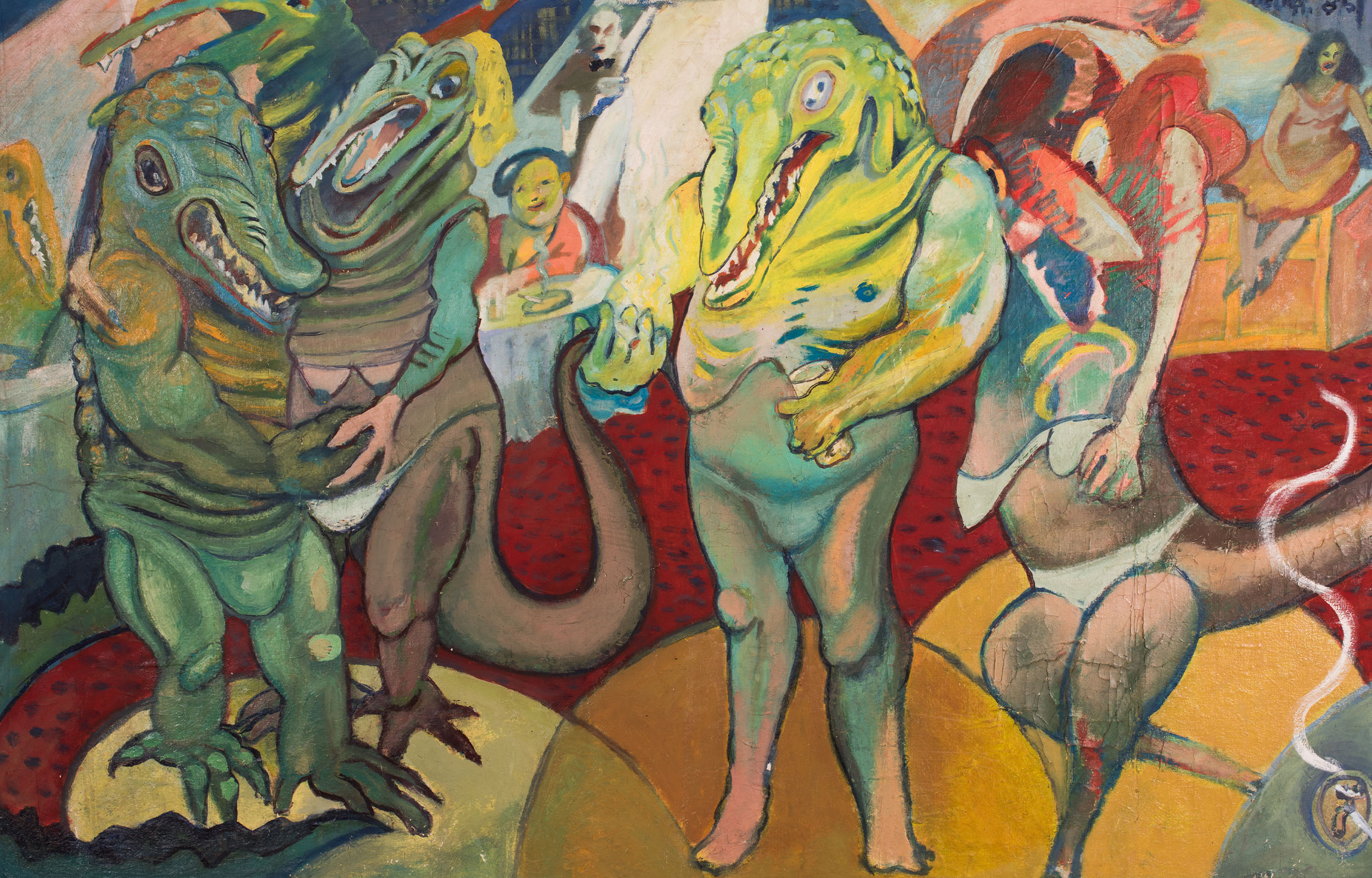
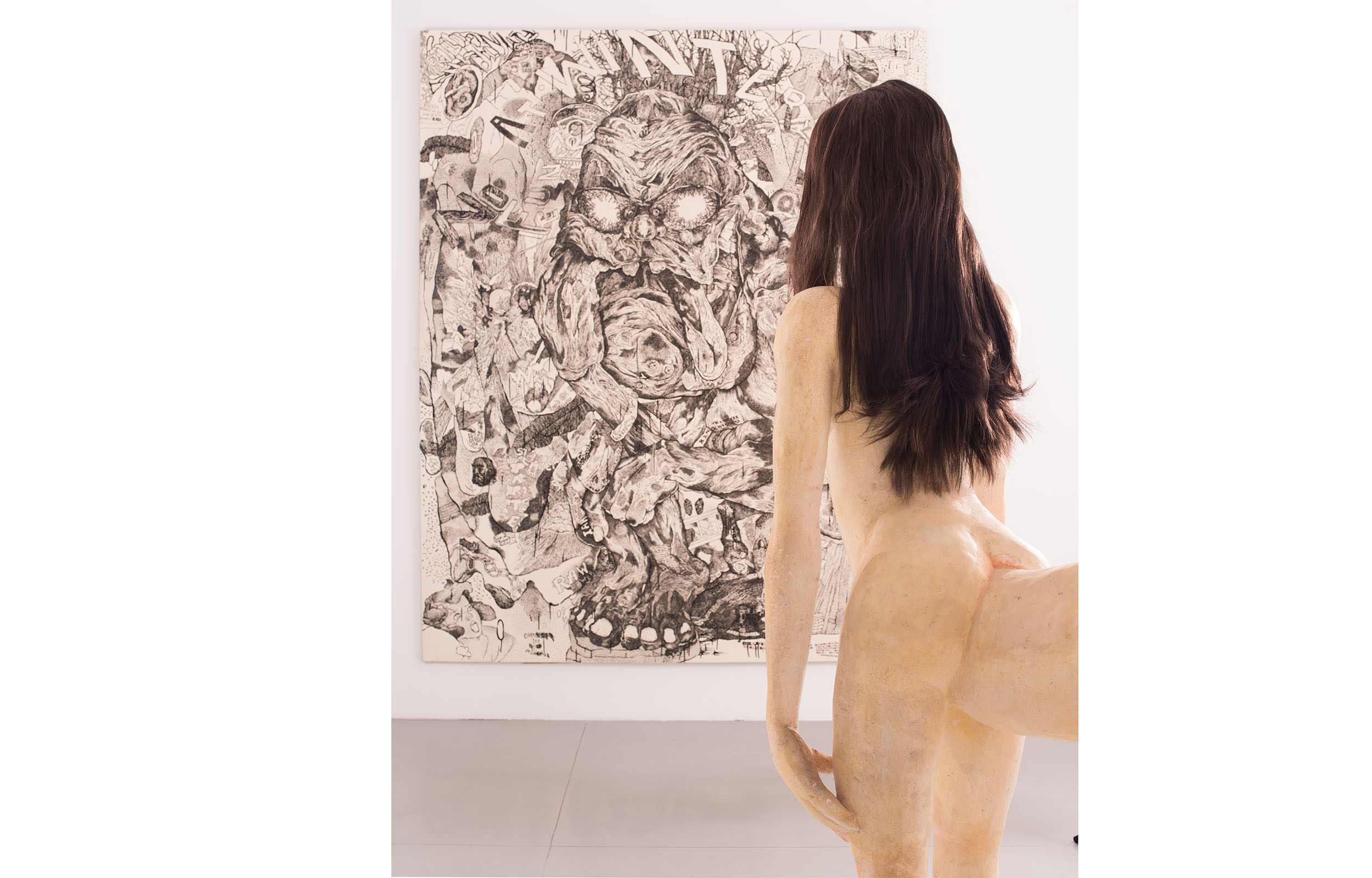
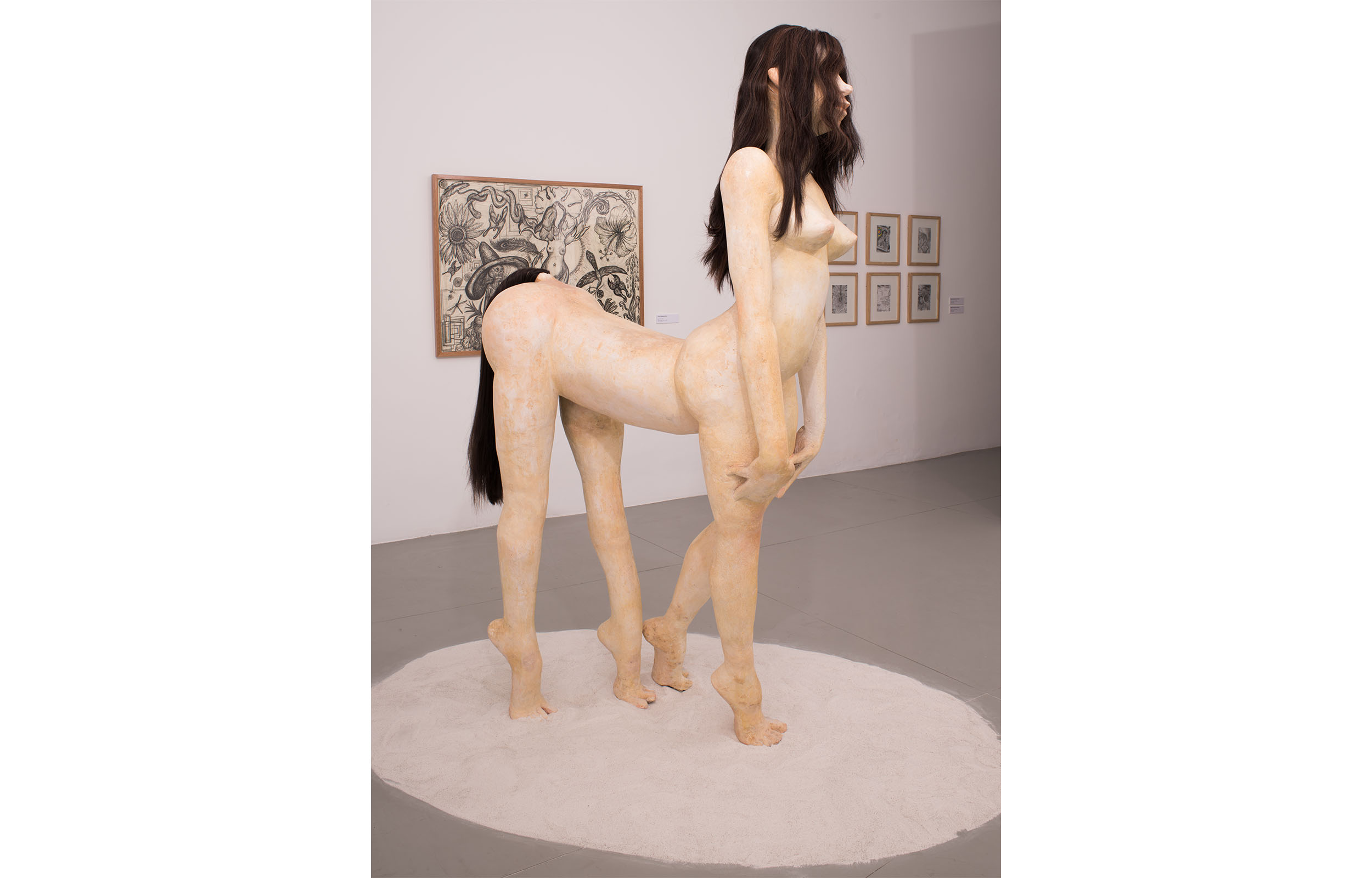
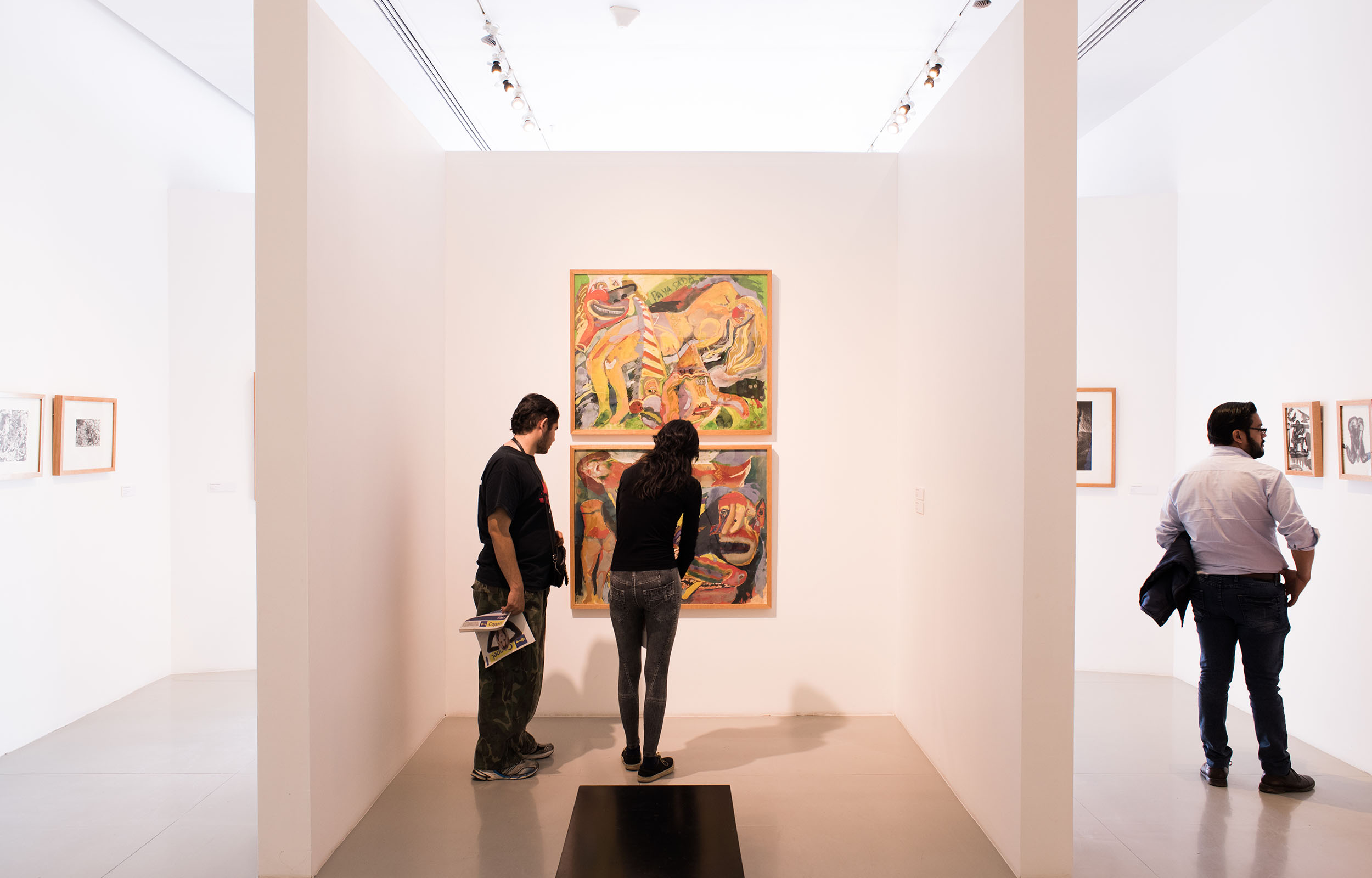
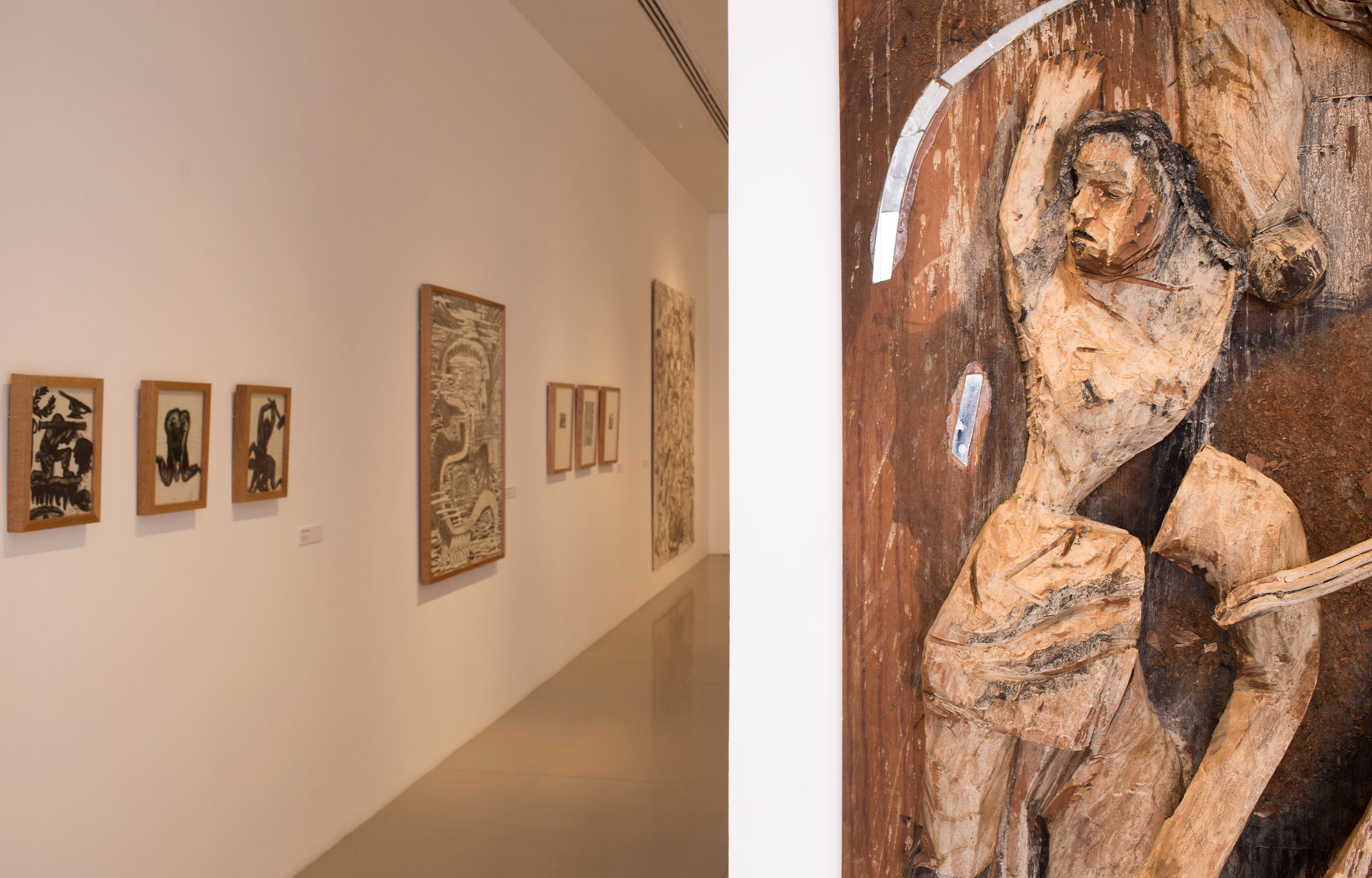
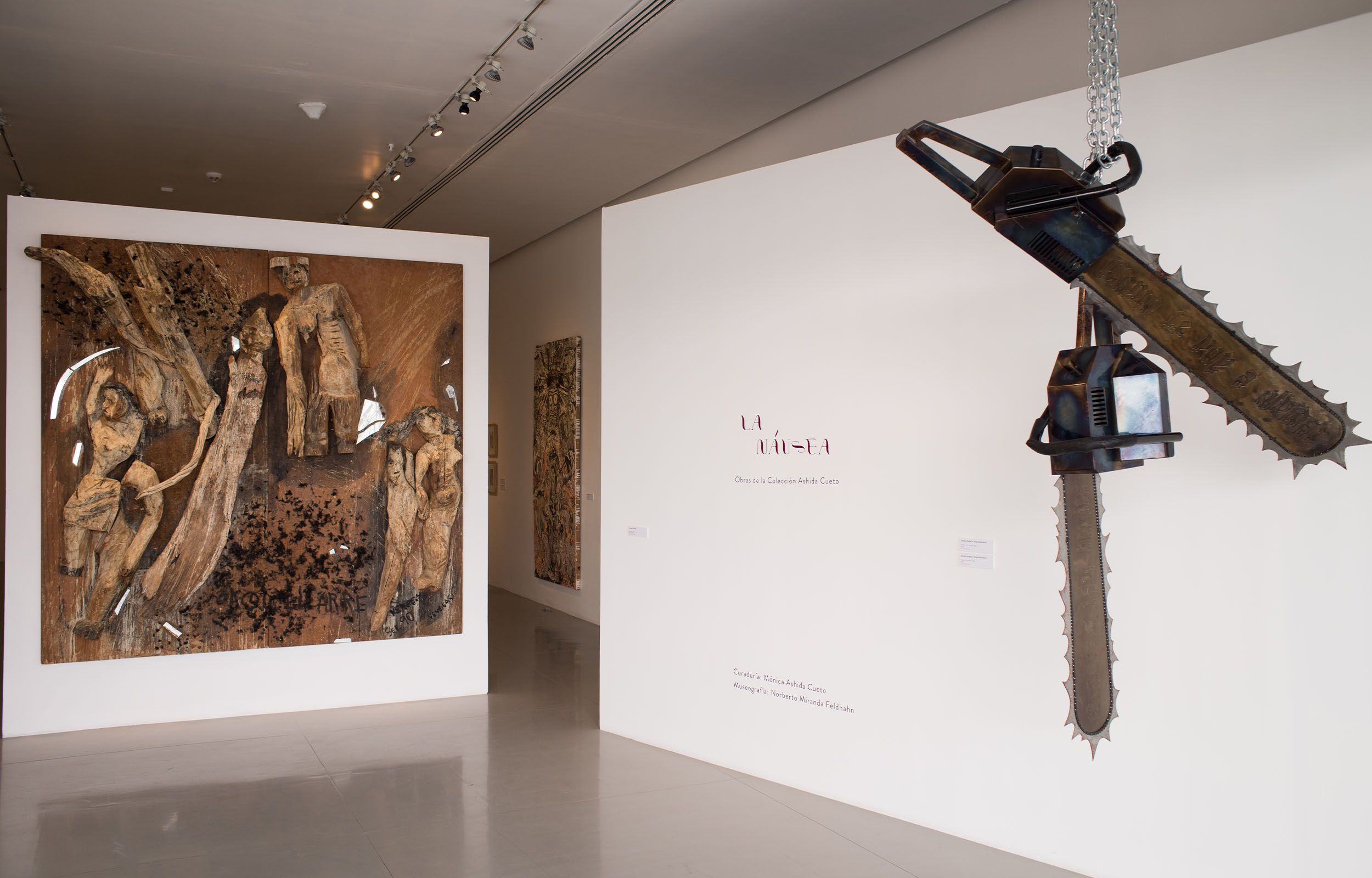
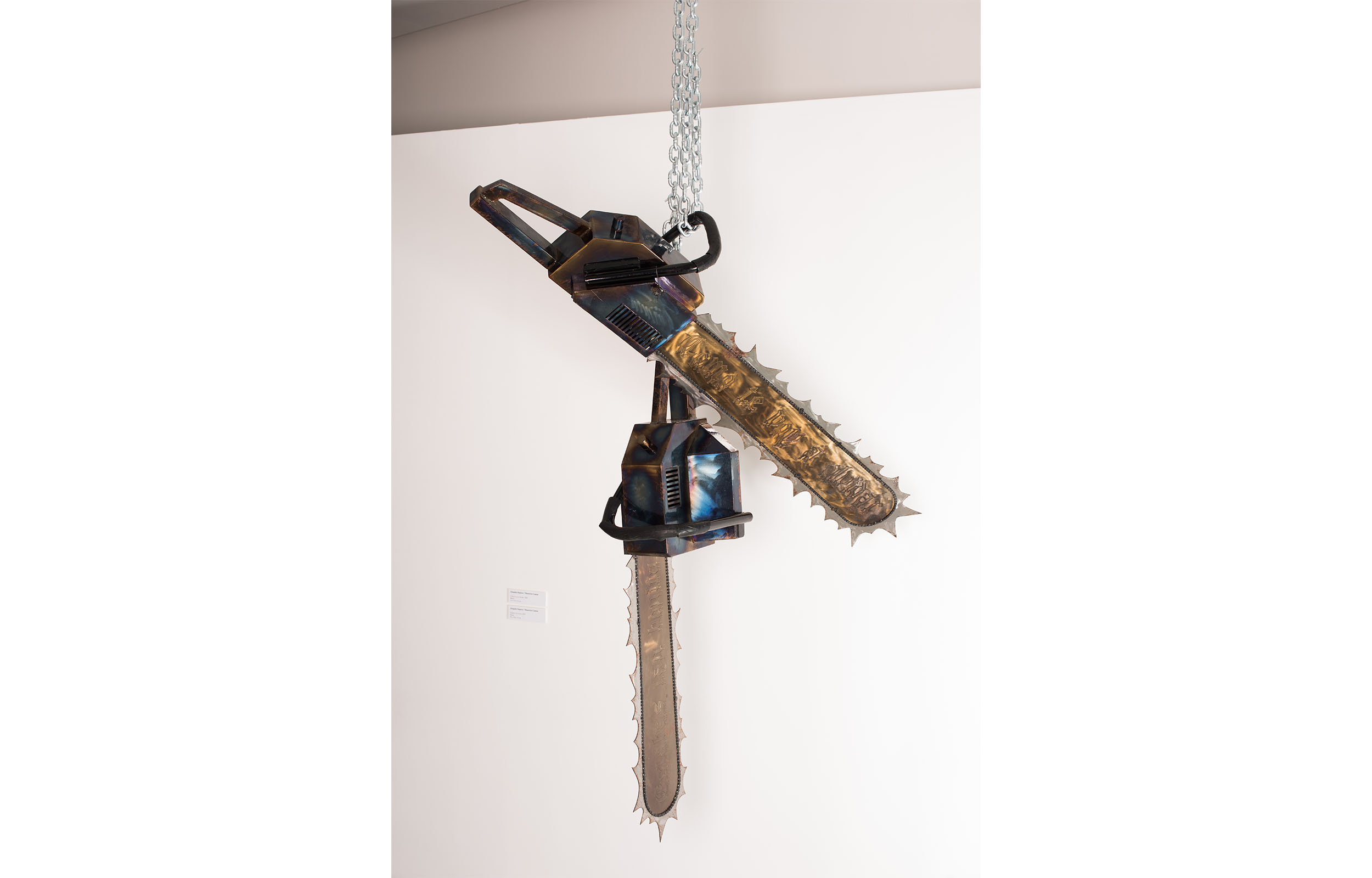
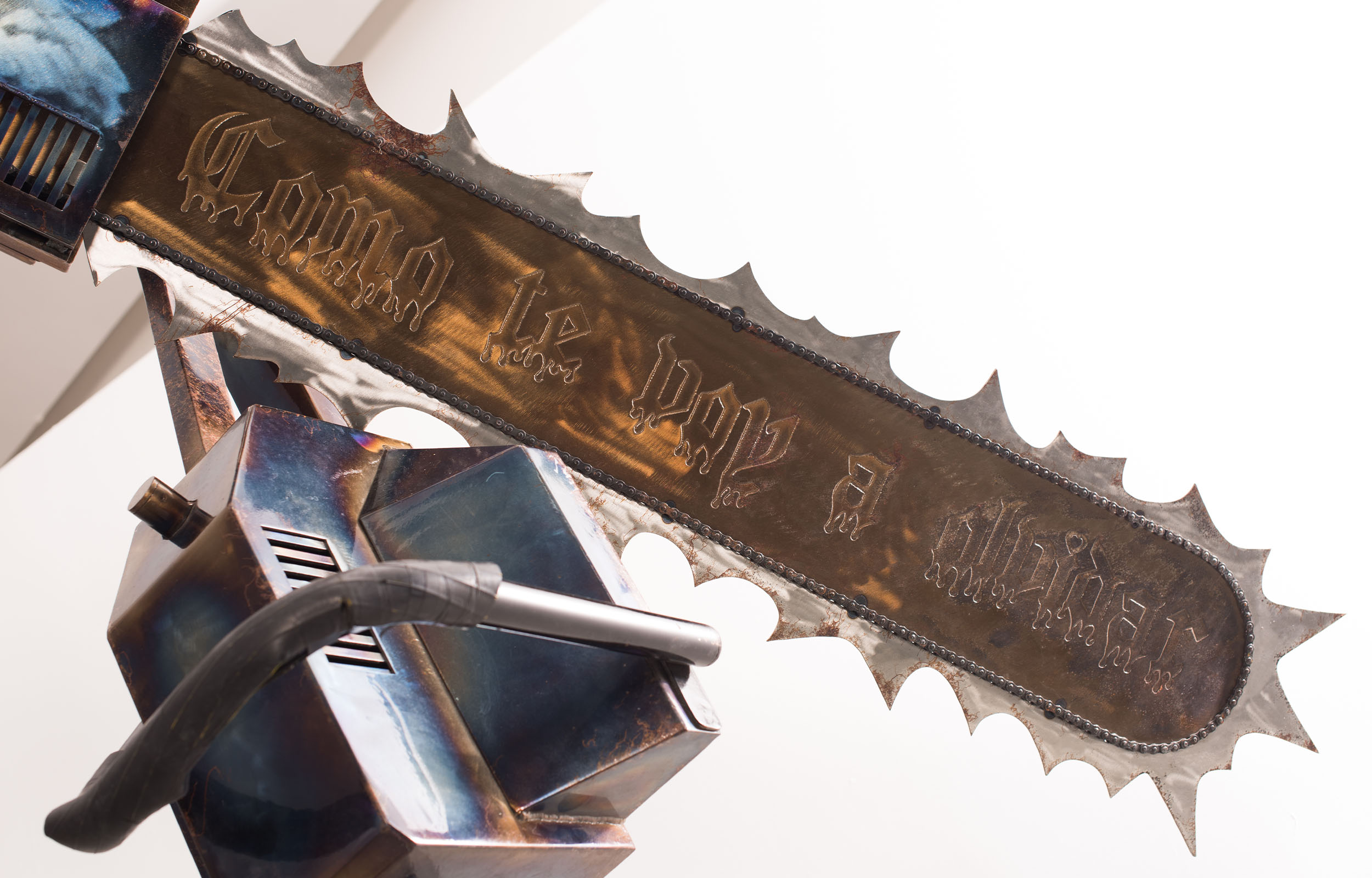
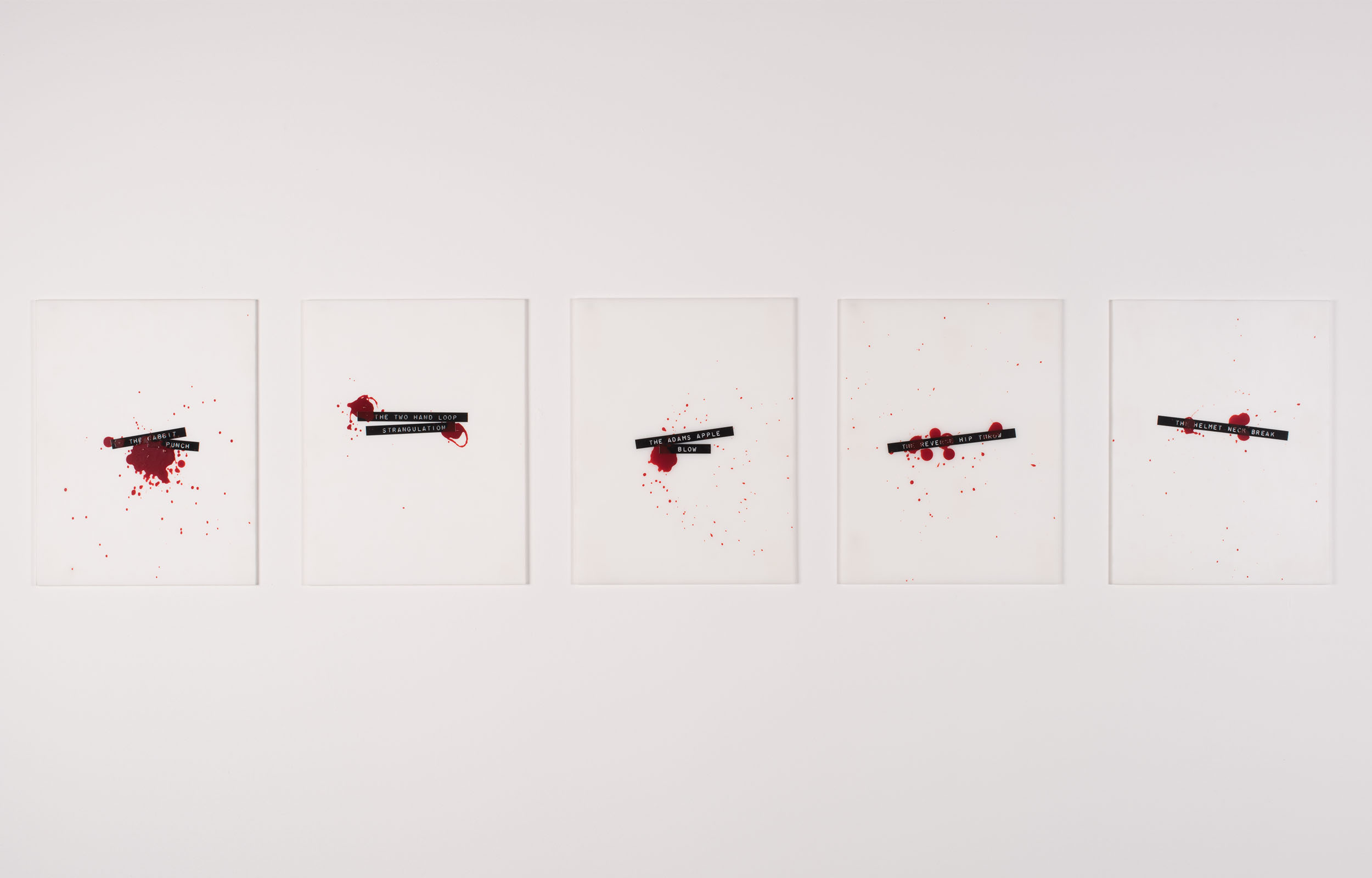
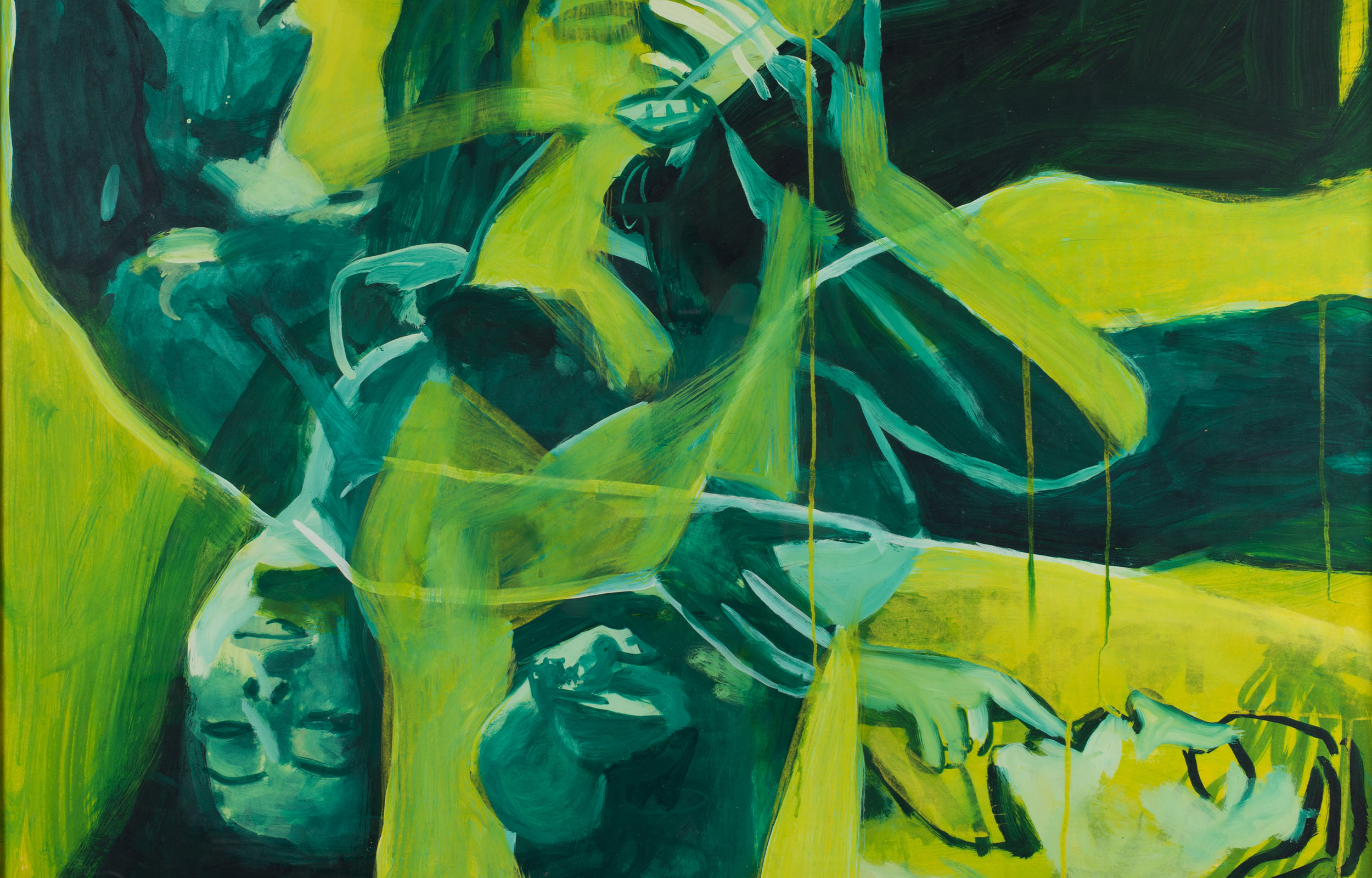
Nausea | Ashida Cueto Collection
From March 6 to July 2, 2017
Curator: Monica Ashida
Marco Arce, Miguel Angel Estevez Nieves, Chris Hammerlein, Helio Montiel, Jose Luis Sanchez Rull, Joaquin Segura / Mauricio Limon and German Venegas
The Ashida Cueto Collection was born of the free and acutely intelligent vision of Carlos Ashida, a perspective shared during a life of passion for and commitment to art.
Countless individual stories are intertwined with that of the collection, which was responsible for discovering and giving a home to many talents on the Mexican cultural scene. The review of the collection is an ongoing effort, with enormous creative and interpretative possibilities.
The story involves, to be sure, the many reasons, circumstances, and special moments in which the different works were acquired, but also the symbolic power exerted by the content of the works themselves, which can be reread in the present context, and of course their collective importance in understanding the history of contemporary art in Mexico through the 1980s and 1990s.
In this context, Nausea is but a small sampling from the collection, whose narrative seeks to offer a glimpse of the often anguished and desperate lives we live, where perversity takes its place between cynicism and hypocrisy. In this sense, things do not seem to have changed much in the twenty years that separate us from the time when some of these works were created.
Although Sartre’s novel, which gives its name to the exhibition, was written more than seventy years ago, it would seem that the concerns and preoccupations of human beings have remained very much the same.
As then, we live in an age of anxiety, in which a latent violence in the air has led us to a renewed awareness of the importance of union. Nevertheless, the speed of communications and the sway of outrageous opinions proffered by the ubiquitous media, within reach of all, have led us to question the scope and profundity of these very concerns.
We are threatened today by the banality of evil, in the form of a leader who pokes his red nose into social networks and seeks to govern the world from his Twitter account. The attack from abroad has piqued our pride and made us swell our chests, declaring ourselves unconditional defenders of our Mexicanness. But are we really willing to take an impartial and scrupulous look at our inner selves?
The existential void of a life full of customs and habits that seem to have lost all meaning, in which being a part of society requires one to abide by unquestioned rules and standards of behavior that ensure the stability of this great organism, continues to distress certain individuals who, owing perhaps to a keener sensibility, feel that they live in an alien world. This awareness of reality is rather a nightmare than a privilege, leading as it does to alienation from everything and everyone. It reaches the point where, like Antoine Roquentin in Sartre’s novel, ones experiences a sense of repulsion, a nausea at the very idea of life.
Given this premise, it is not by chance that the centerpiece of the exhibition is a work by Germán Venegas, Aquelarre (Coven), a high relief executed in 1990 that depicts figures halfway between life and death emerging in an almost natural way from the forms of a tree trunk that has confined them during their long existence. This vision shows us “life in its most lugubrious colors,” but also provokes reflection, as do all the artists in the exhibition, on the value of the observation of this world and of its inhabitants in their most vulnerable forms, in their weaknesses, fears, and darkest desires, in short, in the experiences that make them imperfectly human: a place which, in spite of it all, we insist on glimpsing a ray of hope.
Thus, just as Roquentin meticulously preserved his words in an attempt to magnify the things around him, the artists gathered in Nausea go beyond the ethical prejudices imposed on images to create a sort of diary in which obscenity, violence, death, eroticism, and fear combine amidst the visceral and the rational in a quest to prevent the mere habit of living from putting an end to one’s own life.
